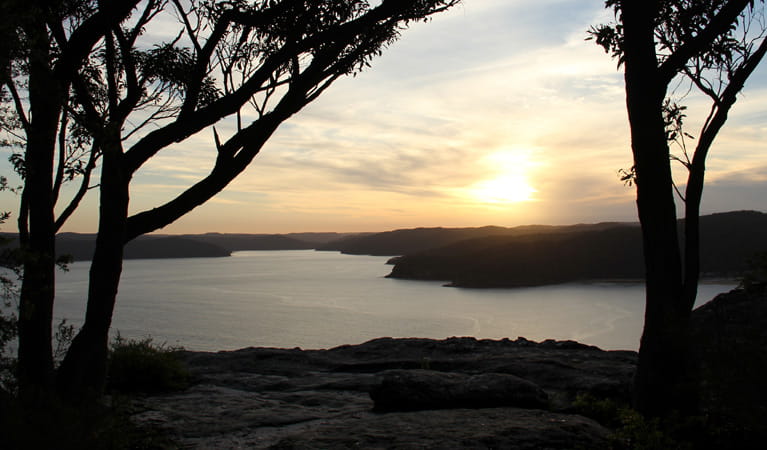Patonga to Pearl Beach walking track
Brisbane Water National Park
Overview
A moderately challenging day walk through red gums and eucalypts, the Patonga to Pearl Beach walking track takes in a stunning lookout and ends at the ocean in either direction.
- Distance
- 3km one-way
- Time suggested
- 1hr 30min - 2hrs
- Grade
- Grade 5
- Trip Intention Form
-
It's a good idea to let someone know where you're going. Fill in a trip intention form to send important details about your trip to your emergency contact.
- Entry fees
- Park entry fees apply
- What to
bring - Drinking water, hat, sunscreen
- Please note
- Remember to take your binoculars if you want to bird watch.
The Patonga to Pearl Beach walking track follows the Great North Walk through the beautiful red gums of Brisbane Water National Park. Bring your swimmers and a towel – this walk begins and ends on a beach, with plenty of opportunity for a refreshing dip or a spot of fishing.
From the end of Patonga Beach, follow signs to the national park. You can head to Warrah Trig from here, while following the steep trail up and over the hill will take you past the spectacular Warrah lookout with views of Hawkesbury River and Pacific Ocean. Pause for a snack, then return to the fire trail, following the Pearl Beach signs past sandstone caves with a natural hanging garden of native ferns. Be sure to keep an eye out for bush turkeys and an ear open for kookaburras.
Your exit is marked at Crystal Avenue. Follow the sounds of crashing waves to find a beautiful stretch of sand on the edge of the bush. You can enjoy a picnic, or take advantage of the small cafes nearby.
Map
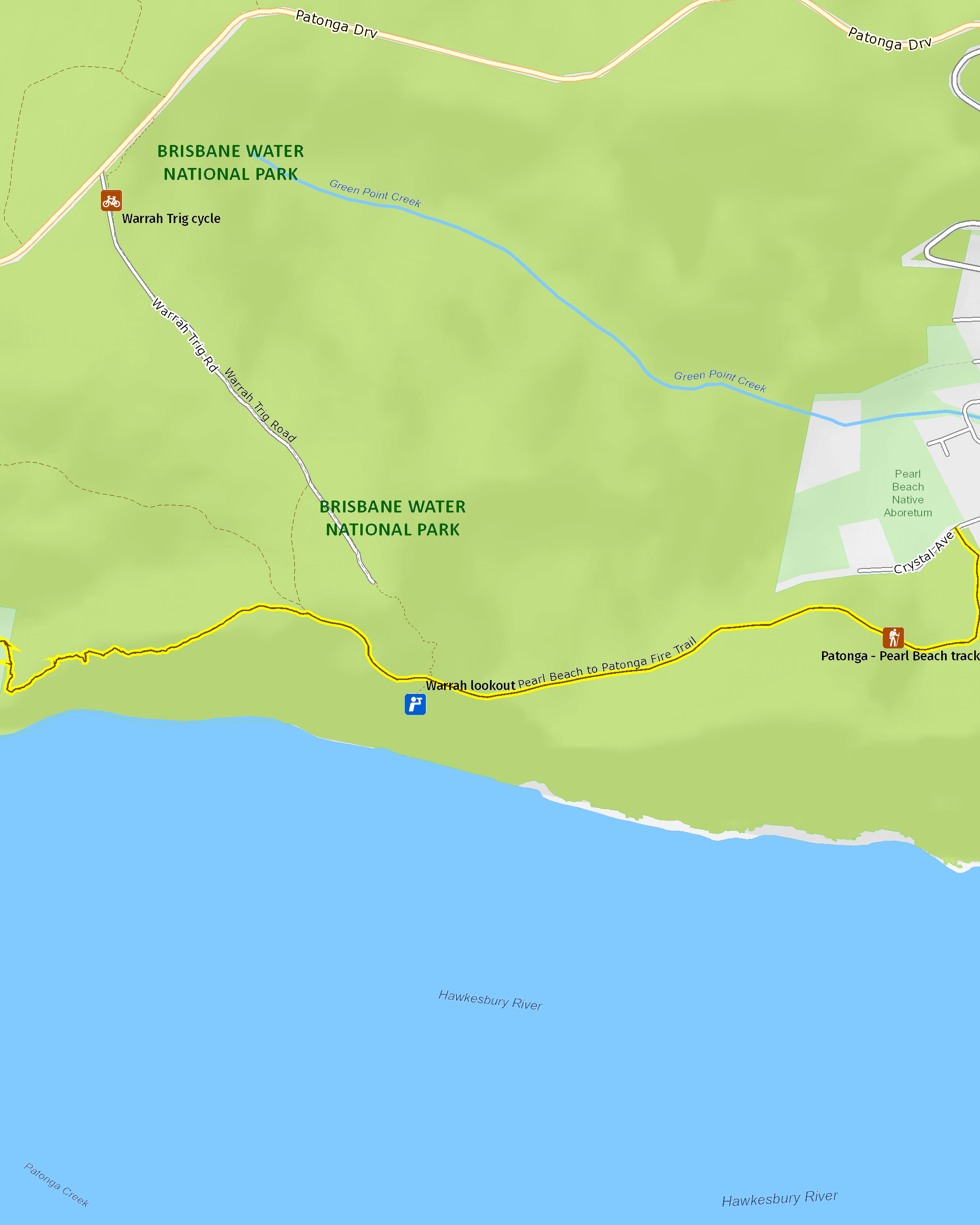
Map legend

Local alerts
For the latest updates on fires, closures and other alerts in this area, see https://www.nationalparks.nsw.gov.au/things-to-do/walking-tracks/patonga-to-pearl-beach-walking-track/local-alerts
General enquiries
- National Parks Contact Centre
- 7am to 7pm daily
- 1300 072 757 (13000 PARKS) for the cost of a local call within Australia excluding mobiles
- parks.info@environment.nsw.gov.au
Park info
- in Brisbane Water National Park in the Sydney and surrounds region
Two picnic areas in Brisbane Water National Park close in the evening:
- Girrakool picnic area is open 7am to 8pm during daylight savings and is open 7am to 6pm at other times
- Somersby Falls picnic area is open 8am to 8pm during daylight savings and is open 8am to 5pm at other times
Other areas of Brisbane Water National Park will be open at all times, however may have to close at times due to poor weather or fire danger.
-
Park entry fees:
$8 per vehicle per day. The park has pay machines that accept both card and coins, or you can pay via the Park'nPay app.
Other fees:
You will need a permit to hold a wedding or undertake commercial photography within the park.
Buy annual pass.
Visitor info
All the practical information you need to know about Patonga to Pearl Beach walking track.
Track grading
Features of this track
Distance
3km one-way
Time
1hr 30min - 2hrs
Quality of markings
Limited signage
Experience required
Experienced bushwalkers
Gradient
Very steep and difficult
Steps
Many steps
Quality of path
Formed track, some obstacles
Getting there and parking
Get driving directions
Patonga to Pearl Beach walking track is located within Brisbane Water National Park. To get there:
By car, from Umina Beach:
- Take Patonga Drive towards Patonga
- As you enter Patonga, take a left towards the boat ramp or continue on to the wharf.
- Great North walk starts a short walk from Patonga boat ramp
By bus:
- The number 54 bus runs between Patonga and Pearl Beach a few times a day. Both villages are small, with a bus stop near the main beachfront areas. Check the bus schedule before you leave.
Parking
Parking is available at Pearl Beach and in Patonga, either at the wharf in the centre of town or at the boat ramp a short walk away.
Best times to visit
There are lots of great things waiting for you in Brisbane Water National Park. Here are some of the highlights.
Autumn
The cooler weather makes it a perfect time to find a waterfall walking track, and keep an eye out for ancient Aboriginal engravings along the way.
Spring
Pack a picnic lunch and soak up the delightful sights and sounds of spring. Relax among the wildflowers and wildlife as the Hawkesbury River flows by.
Summer
Take advantage of the warmer summer weather and paddle down Patonga Creek or Mooney Mooney Creek in a canoe.
Weather, temperature and rainfall
Summer temperature
Average
15°C and 27°C
Highest recorded
43.8°C
Winter temperature
Average
5°C and 19°C
Lowest recorded
-4.2°C
Rainfall
Wettest month
March
Driest month
September
The area’s highest recorded rainfall in one day
218.4mm
Maps and downloads
Prohibited
Pets
Pets and domestic animals (other than certified assistance animals) are not permitted. Find out which regional parks allow dog walking and see the pets in parks policy for more information.
Smoking
NSW national parks are no smoking areas.
Learn more
Patonga to Pearl Beach walking track is in Brisbane Water National Park. Here are just some of the reasons why this park is special:
A haven for wildlife
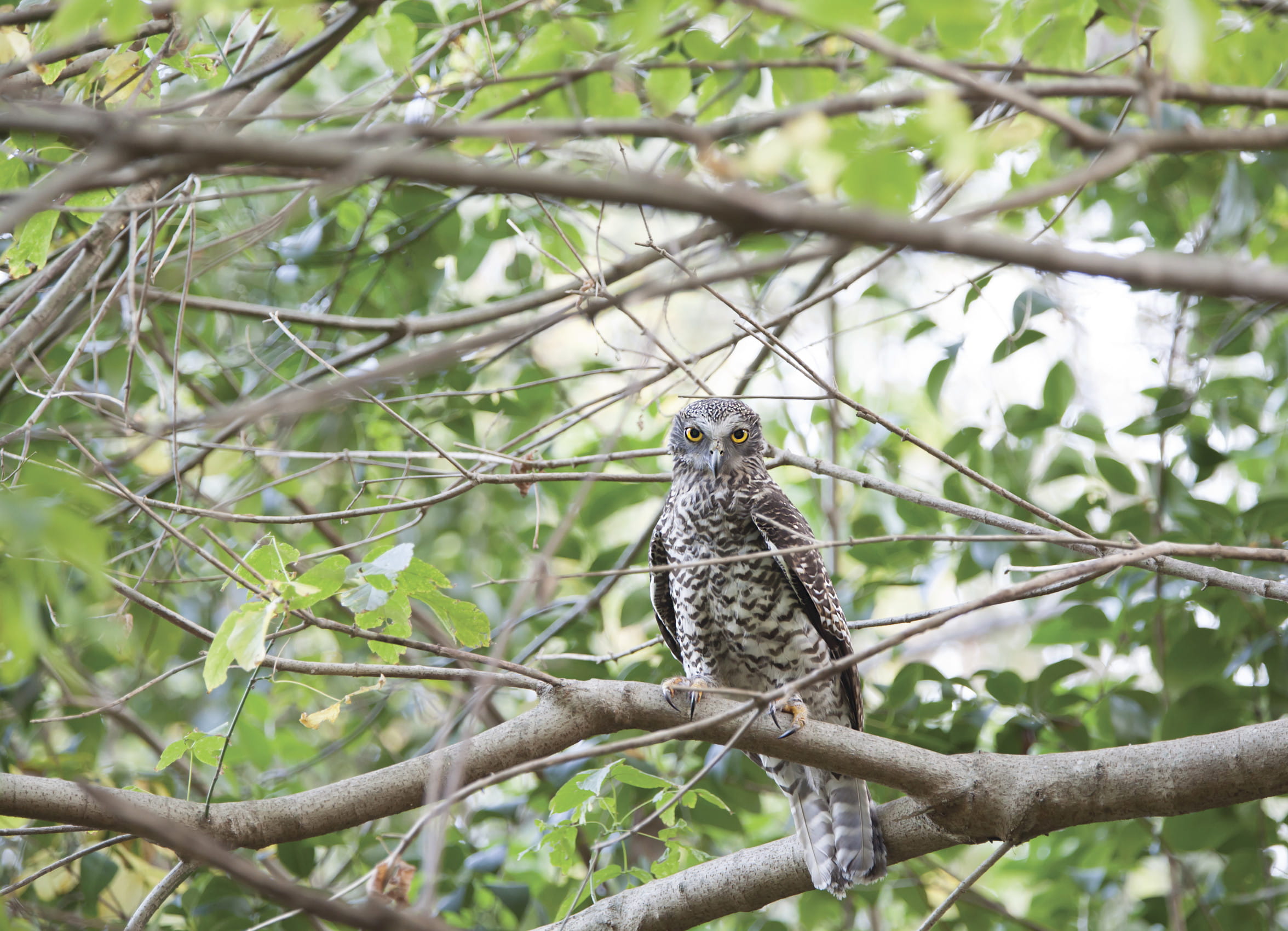
Brisbane Water National Park is home to an incredible 270 native animal species. Keep your eyes peeled for wildlife and bird life such as the threatened spotted tailed quoll, the rare glossy black cockatoo and powerful owl. You might be lucky enough to share a picnic at Girrakool picnic area with a few wallabies who love this peaceful place.
- Girrakool loop track A lovely way to finish a barbecue, the Girrakool loop track is a short and easy walk through bushland, featuring an Aboriginal rock engraving site and scenic waterfalls.
- Great North walk stage 8: Waratah spectacular Panoramic views of Sydney’s northern coastline await you on stage 8 of the Great North walk. The 20km guided tour through Brisbane Water National Park starts at Patonga and ends at Wondabyne Station.
- Great North walk stage 9: Rainforest walk Stage 9 of the Great North walk takes you into the temperate rainforest of Brisbane Water National Park. The 16km guided tour starts at Wondabyne Station and ends at Kariong.
- The Earth’s environment Join The Earth's environment Geography excursion for Stage 2 (Years 3-4) at Brisbane Water National Park, near Gosford. Students will discover how NSW National Parks safeguards over 10 per cent of land in NSW.
- Tommos loop and Rocky Ponds cycling loop Mountain biking enthusiasts will enjoy the challenging Tommos loop and Rocky Ponds cycling loop, a 20km bushland ride taking in scenic Central Coast views.
A wonderland of wildflowers
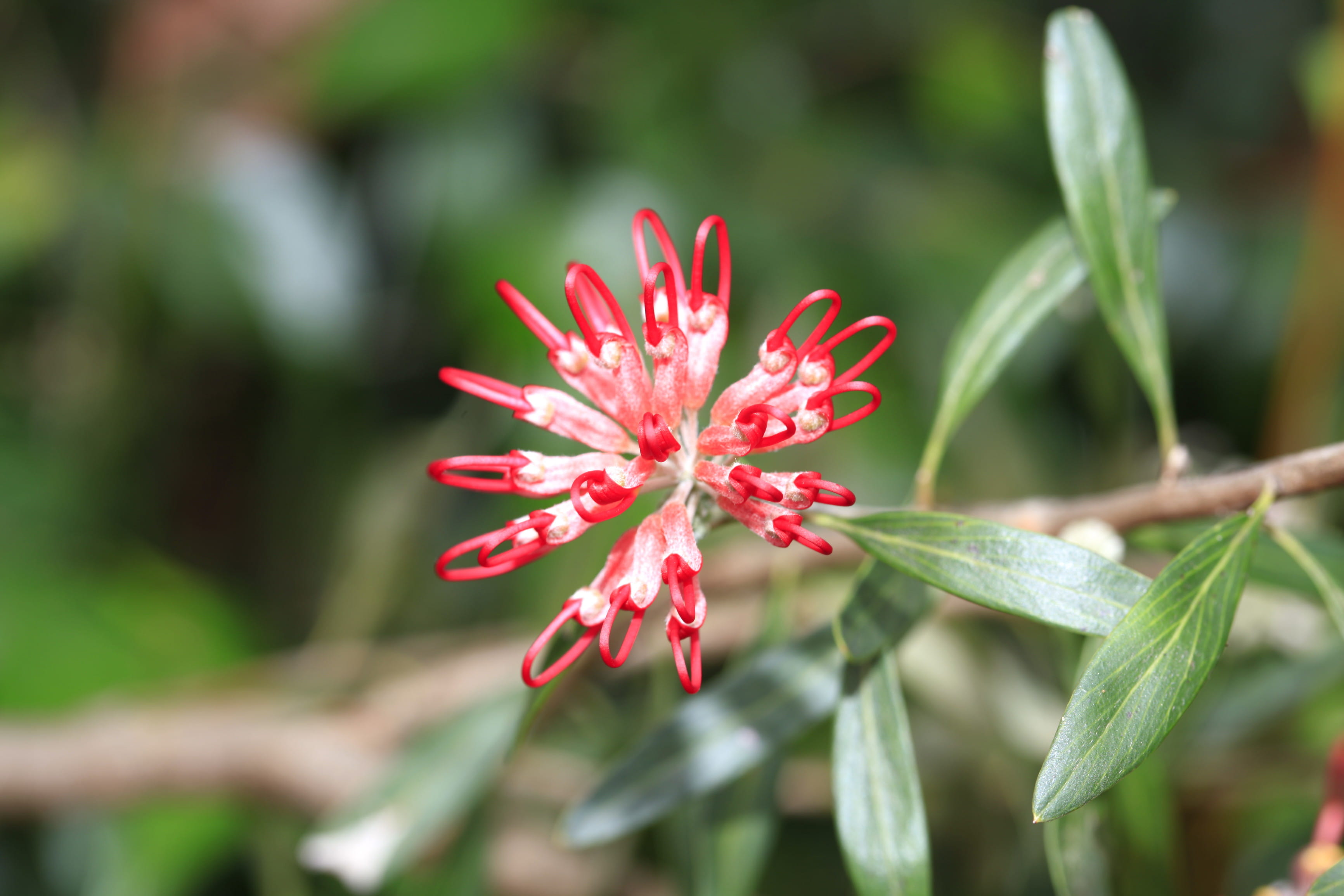
Located 12km from Gosford, the park covers 12,000ha of rugged sandstone country, and boarders the Hawkesbury river, which feeds cascading waterfalls. The landscape is gorgeous all year round, especially from late winter to early spring when it comes alive with colourful wildflowers.
- Great North walk stage 10: Brisbane Water dreaming Complete the Great North walk challenge with the tenth and final leg of the series. You’ll walk 18km from Kariong to Somersby, exploring the serene waterways of Brisbane Water National Park.
- Great North walk stage 8: Waratah spectacular Panoramic views of Sydney’s northern coastline await you on stage 8 of the Great North walk. The 20km guided tour through Brisbane Water National Park starts at Patonga and ends at Wondabyne Station.
- Great North walk stage 9: Rainforest walk Stage 9 of the Great North walk takes you into the temperate rainforest of Brisbane Water National Park. The 16km guided tour starts at Wondabyne Station and ends at Kariong.
- Somersby Falls picnic area A great place to picnic on the Central Coast, Somersby Falls offers barbecues and picnic tables in a lush rainforest complete with waterfalls and a walking track.
- Warrah lookout Warrah lookout, offering scenic views of Broken Bay and the Hawkesbury River, is just a short walk from the carpark. It’s a great place to see Waratahs in season.
Ancient landscapes
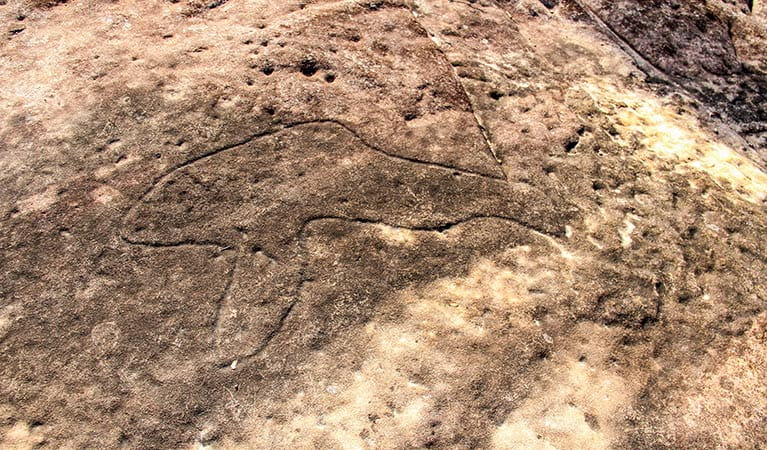
Aboriginal people in the area have a long association with the landscape of Brisbane Water National Park and much evidence of this remains today in the form of rock engravings, foreshore middens and rock paintings. The flat, exposed areas of Hawkesbury sandstone within the park provide an ideal 'canvas' for Aboriginal artists, and there are hundreds of rock engraving sites throughout the park. Aboriginal sites on Hawkesbury sandstone have a distinctive style of engraving which is unique in Australia. The Bulgandry Aboriginal engraving site at Kariong is an excellent example of rock art within the park and is easily accessible.
- Aboriginal culture Bring your students to this unique excursion in Brisbane Water National Park, near Gosford. They’ll experience the park through the eyes of an Aboriginal person on this Stage 2 (Years 3-4) Aboriginal culture Geography excursion.
- Girrakool loop track A lovely way to finish a barbecue, the Girrakool loop track is a short and easy walk through bushland, featuring an Aboriginal rock engraving site and scenic waterfalls.
- The Earth’s environment Join The Earth's environment Geography excursion for Stage 2 (Years 3-4) at Brisbane Water National Park, near Gosford. Students will discover how NSW National Parks safeguards over 10 per cent of land in NSW.
Stretch your legs
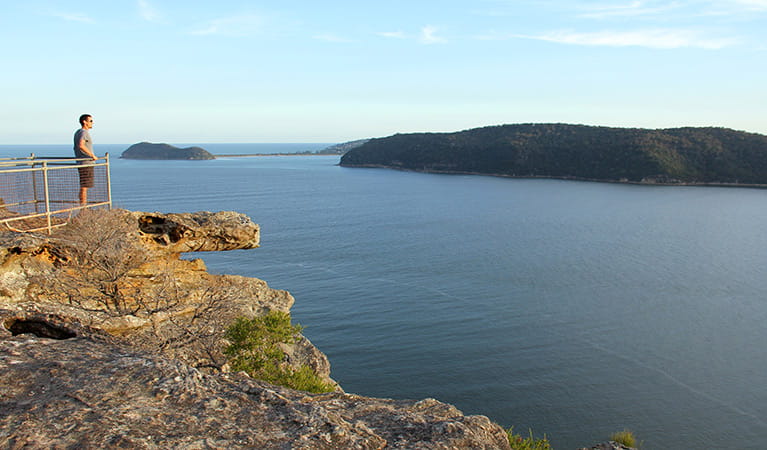
Brisbane Water National Park offers great ways to get amongst nature. Why not hop on your mountain bike and get your adrenalin pumping along the Tommos loop and Rocky Ponds cycling route? Or you can wear out your walking shoes along the Girrakool loop walking track. For the more energetic, the park is a hikers delight. Longer treks range from an hour or two to overnight on sections of the Great North walk, which passes through the park on its way from Sydney to Newcastle.
- Girrakool picnic area A great spot for a family picnic, Girrakool picnic area has barbecues, lots of green space to run around and a scenic walking track that features Aboriginal engravings.
- Great North walk - Brisbane Water National Park You’ll find the Wondabyne to Patonga and Patonga to Pearl Beach parts of the iconic Great North walk in Brisbane Water National Park. Take a short walk or overnight hike.
Plants and animals protected in this park
Animals
-
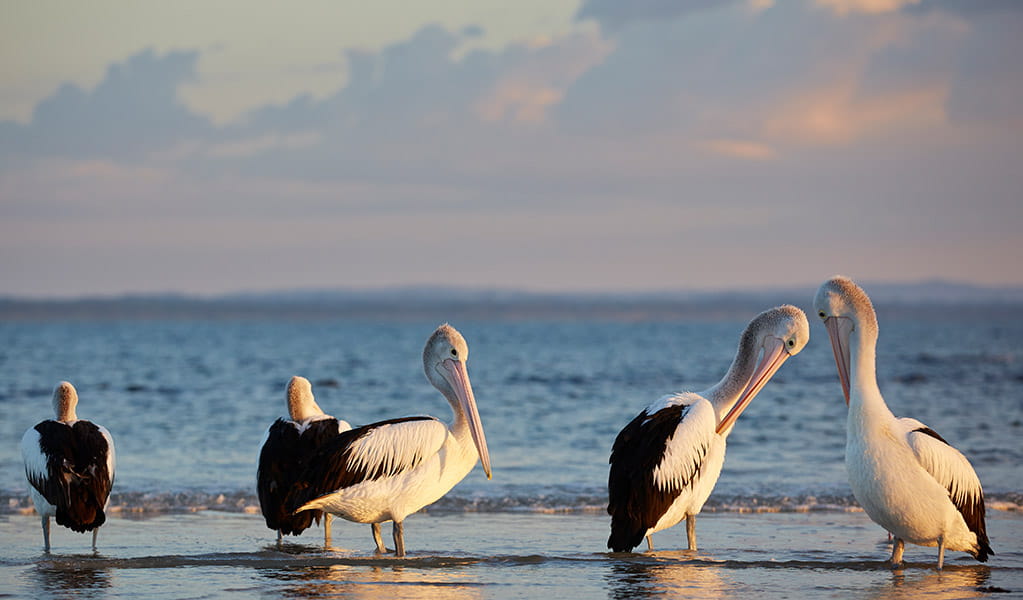
Australian pelican (Pelecanus conspicillatus)
The curious pelican is Australia’s largest flying bird and has the longest bill of any bird in the world. These Australian birds are found throughout Australian waterways and the pelican uses its throat pouch to trawl for fish. Pelicans breed all year round, congregating in large colonies on secluded beaches and islands.
-
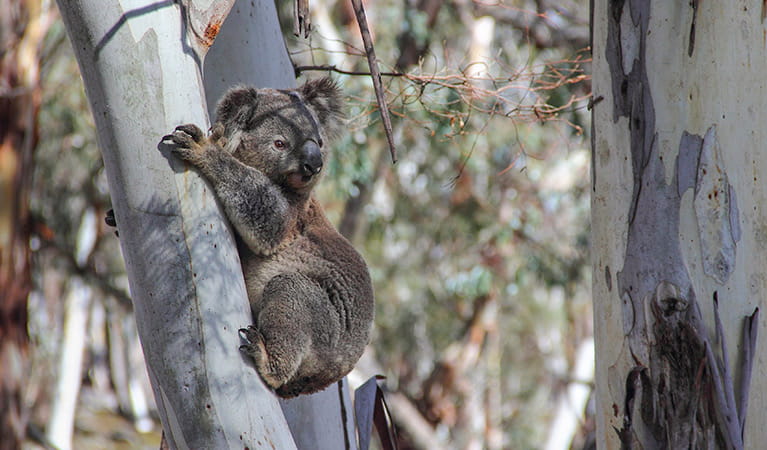
Koala (Phascolarctos cinereus)
One of the most renowned Australian animals, the tree-dwelling marsupial koala can be found in gum tree forests and woodlands across eastern NSW, Victoria and Queensland, as well as in isolated regions in South Australia. With a vice-like grip, this perhaps most iconic but endangered Australian animal lives in tall eucalypts within a home range of several hectares.
-
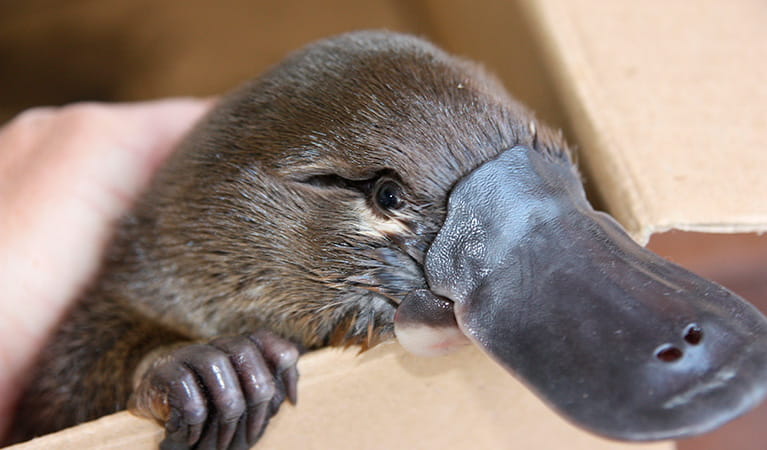
Platypus (Ornithorhynchus anatinus)
One of the most fascinating and unusual Australian animals, the duck-billed platypus, along with the echidna, are the only known monotremes, or egg-laying mammals, in existence. The platypus is generally found in permanent river systems and lakes in southern and eastern NSW and east and west of the Great Dividing Range.
Plants
-
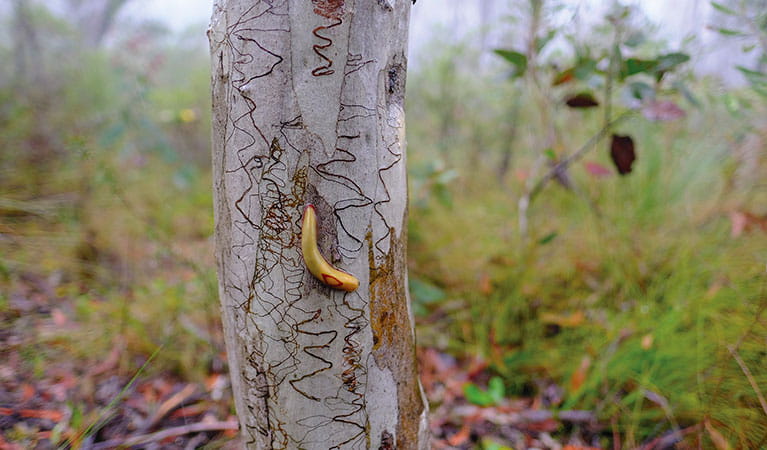
Scribbly gum (Eucalyptus haemastoma)
Easily identifiable Australian native plants, scribbly gum trees are found throughout NSW coastal plains and hills in the Sydney region. The most distinctive features of this eucalypt are the ‘scribbles’ made by moth larva as it tunnels between the layers of bark.
-
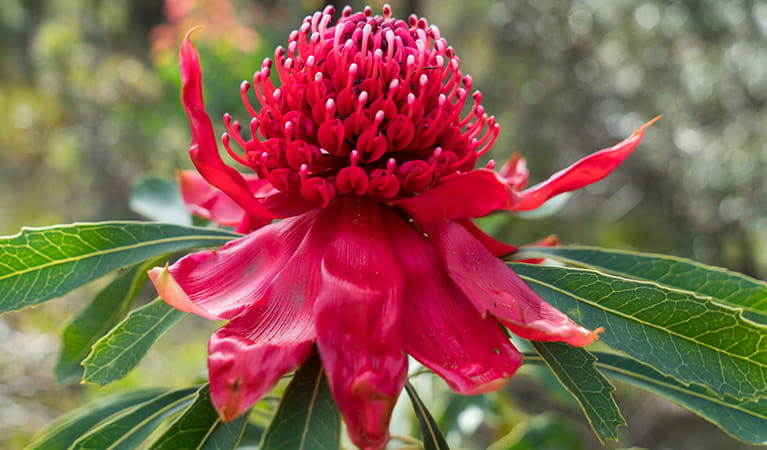
Waratah (Telopea speciosissima)
The beautiful waratah is not only the NSW floral emblem, it's also one of the best-known Australian native plants. This iconic Australian bush flower can be found on sandstone ridges around Sydney, in nearby mountain ranges and on the NSW South Coast. The waratah has a vibrant crimson flowerhead, measuring up to 15cm across, and blossoms in spring.

